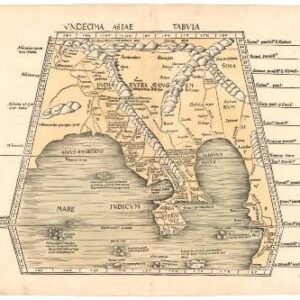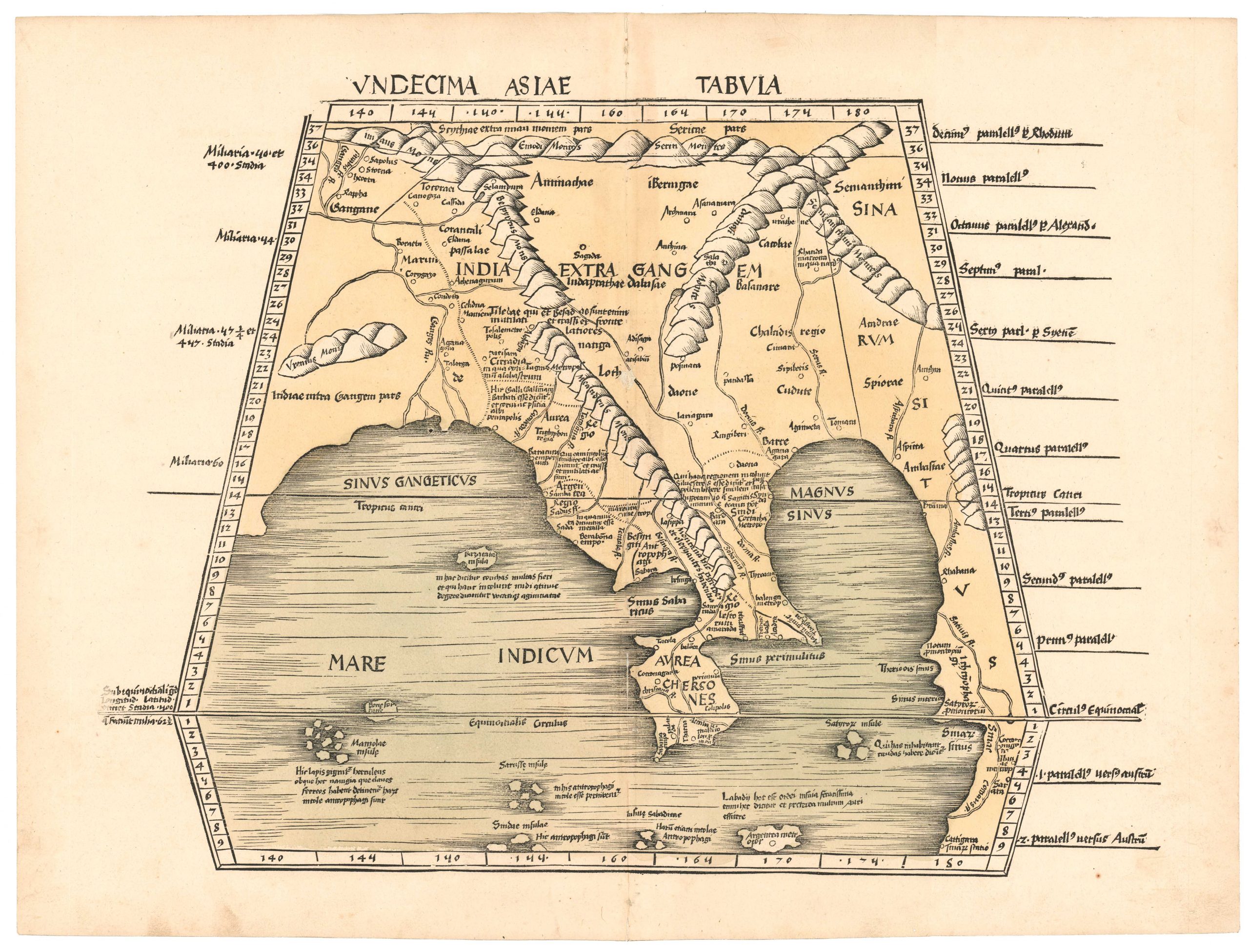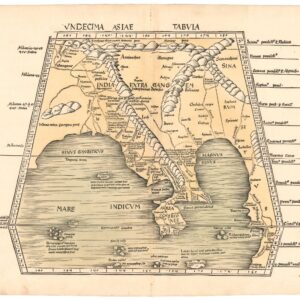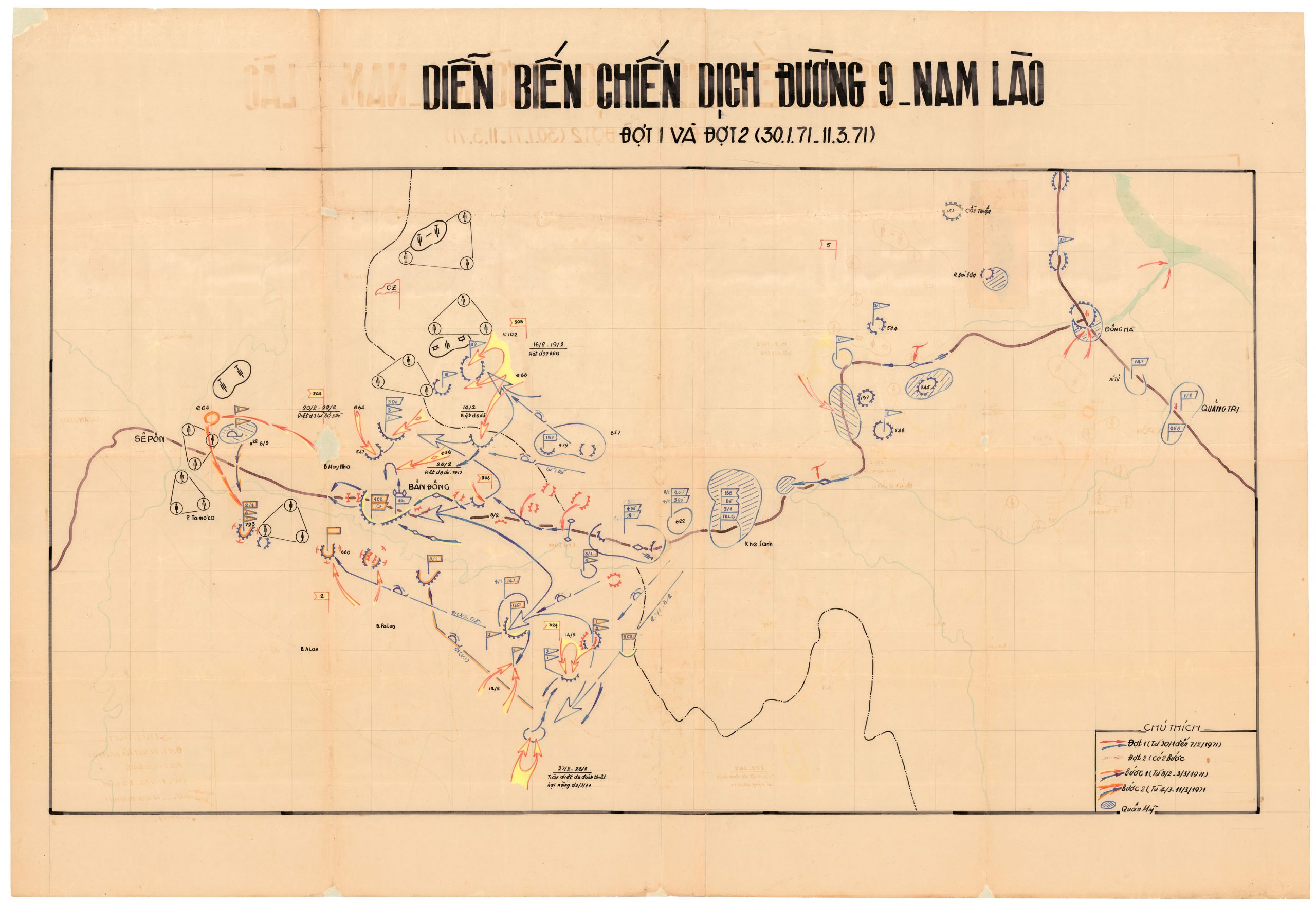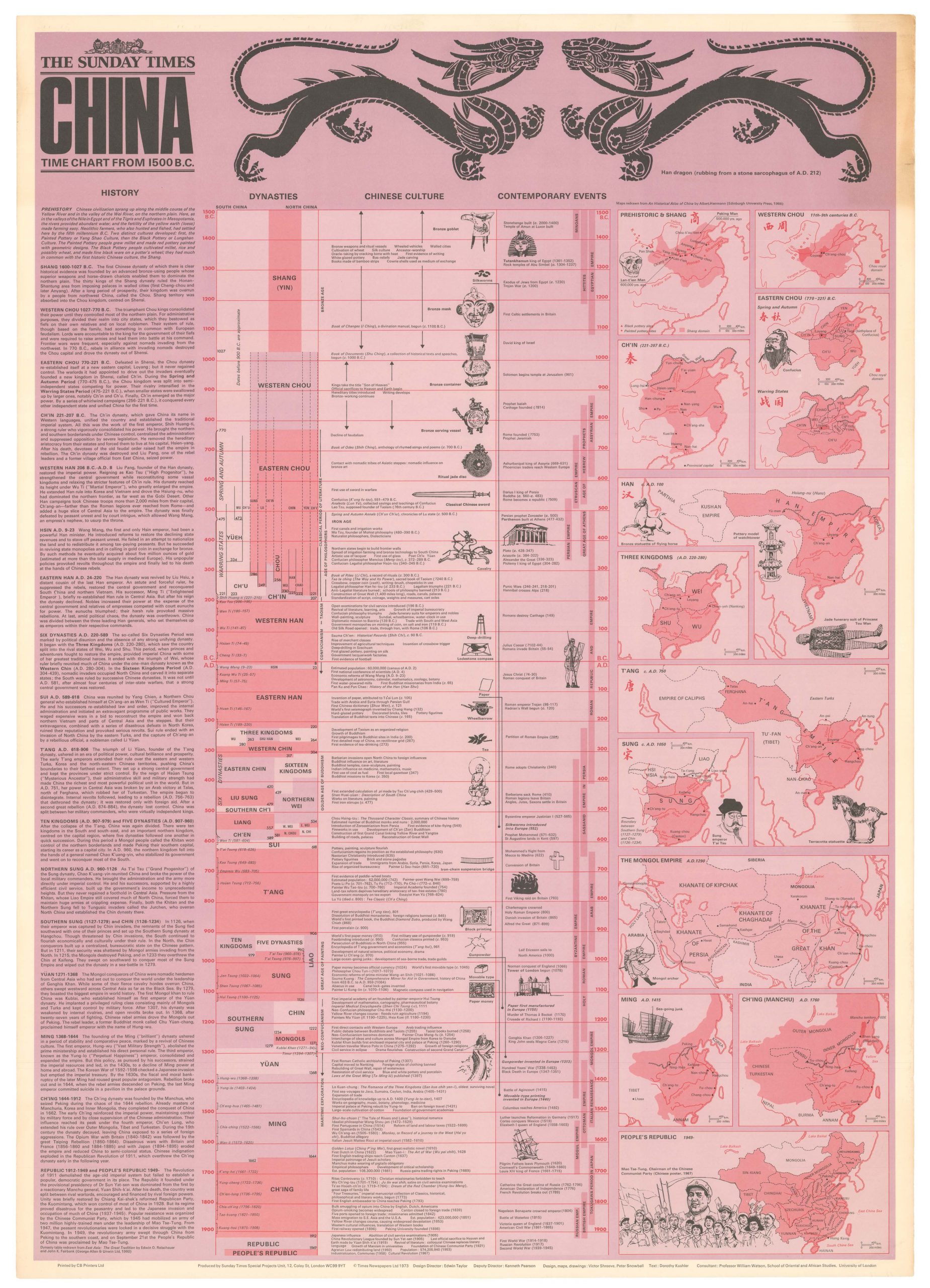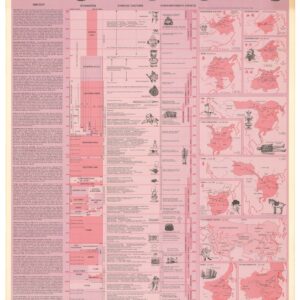Mid 16th century Ptolemaic map of India with the Ganges and Indus rivers.
Tabula Asiae X (India)
Out of stock
Description
The first edition of Munster’s map of India and the Indian Ocean with the sources of the Indus and Ganges Rivers, based upon Claudius Ptolemy which appeared in his Geographia Universalis, first published in 1540. This famous map features illustrations of some of the mythological monsters reported by early travellers to the east, and at the top a figure of cannibals dismembering a corpse.
The Geographia was a new and important edition of Ptolemy, with redesigned maps and the text revised by Münster based on the Willibald Pirckheimer Latin translation with corrections of 1535 by Servetus.
Verso presents a decorative woodcut border probably cut by the famous 16th century woodcutter Hans Holbein.
Cartographer(s):
Sebastian Münster (1488-1552) was a cosmographer and professor of Hebrew who taught at Tübingen, Heidelberg, and Basel. He settled in Basel in 1529 and died there, of the plague, in 1552. Münster was a networking specialist and stood at the center of a large network of scholars from whom he obtained geographic descriptions, maps, and directions.
As a young man, Münster joined the Franciscan order, in which he became a priest. He studied geography at Tübingen, graduating in 1518. Shortly thereafter, he moved to Basel for the first time, where he published a Hebrew grammar, one of the first books in Hebrew published in Germany. In 1521, Münster moved to Heidelberg, where he continued to publish Hebrew texts and the first German books in Aramaic. After converting to Protestantism in 1529, he took over the chair of Hebrew at Basel, where he published his main Hebrew work, a two-volume Old Testament with a Latin translation.
Münster published his first known map, a map of Germany, in 1525. Three years later, he released a treatise on sundials. But it would not be until 1540 that he published his first cartographic tour de force: the Geographia universalis vetus et nova, an updated edition of Ptolemy’s Geography. In addition to the Ptolemaic maps, Münster added 21 modern maps. Among Münster’s innovations was the inclusion of map for each continent, a concept that would influence Abraham Ortelius and other early atlas makers in the decades to come. The Geographia was reprinted in 1542, 1545, and 1552.
Münster’s masterpiece was nevertheless his Cosmographia universalis. First published in 1544, the book was reissued in at least 35 editions by 1628. It was the first German-language description of the world and contained 471 woodcuts and 26 maps over six volumes. The Cosmographia was widely used in the sixteenth and seventeenth centuries and many of its maps were adopted and modified over time, making Münster an influential cornerstone of geographical thought for generations.
Condition Description
Woodblock map with letterpress on verso. Paper with usual age-toning. Very good throughout.
References
